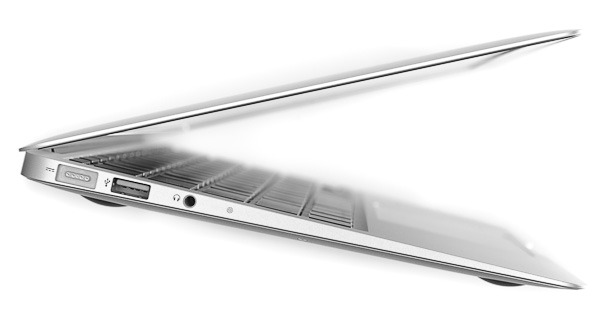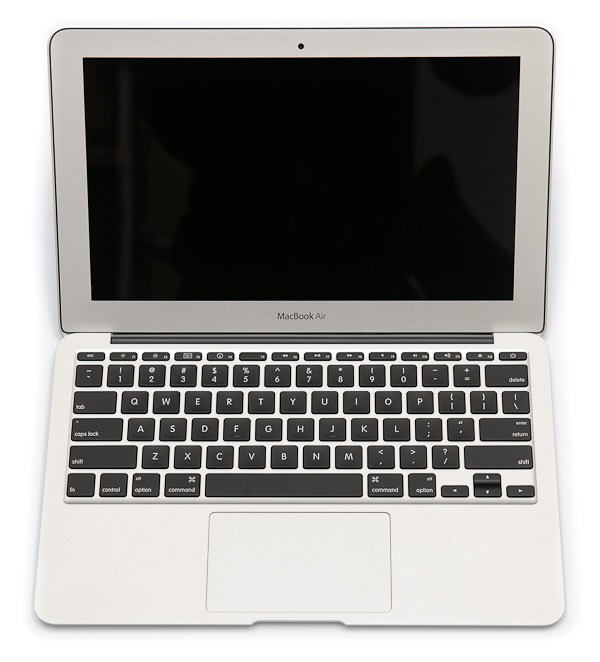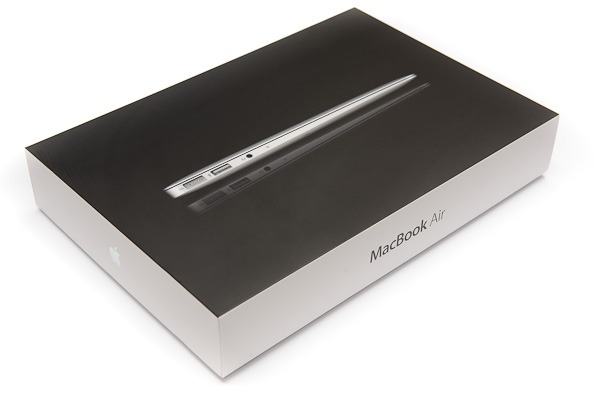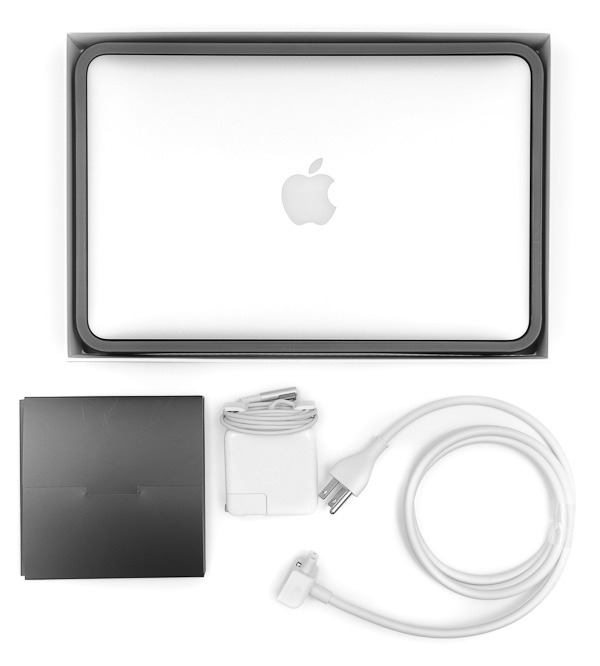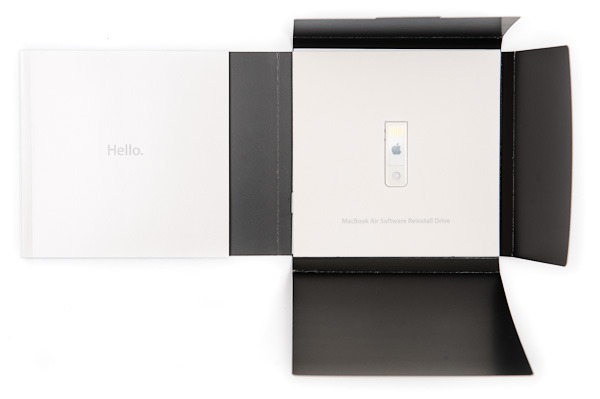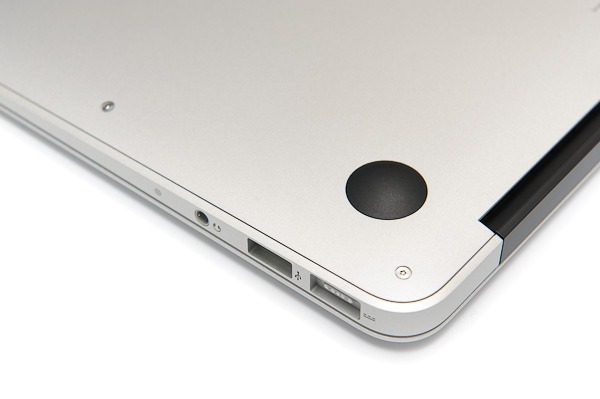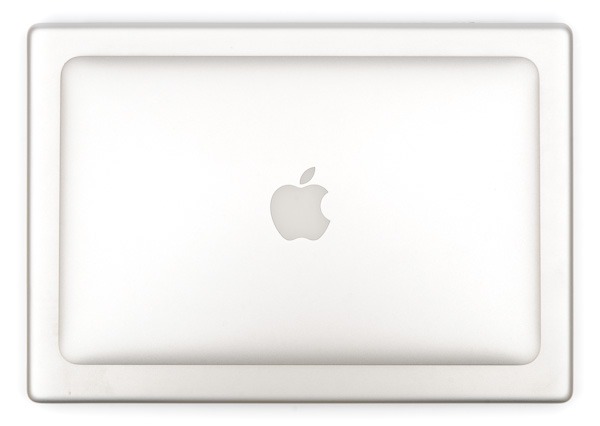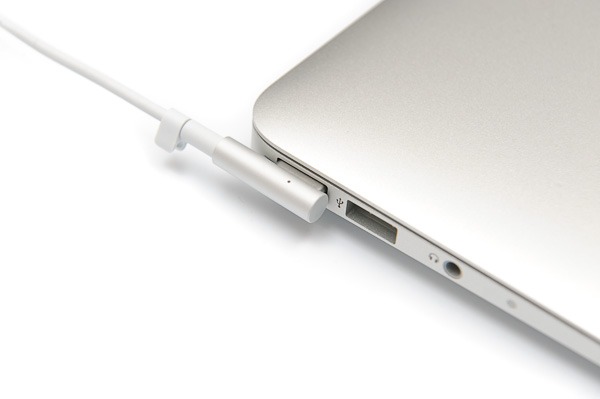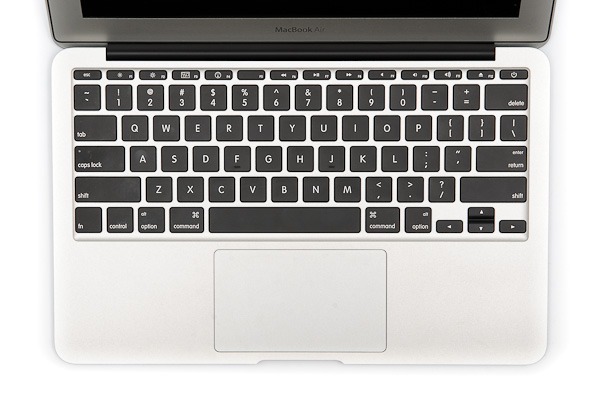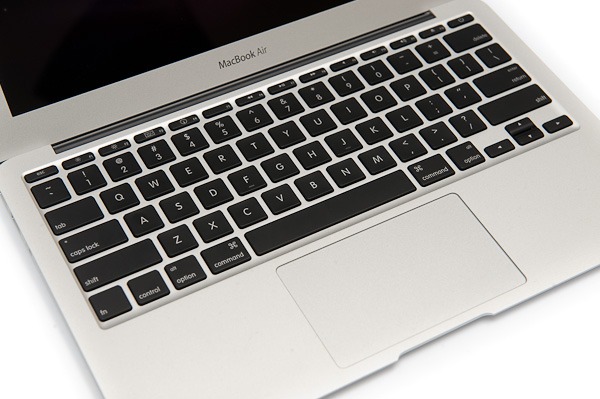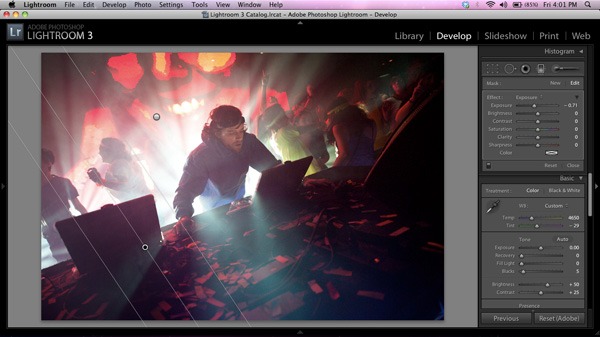When the original MacBook Air debuted in 2008, the general reception seemed to be, “Cool – but I'll pass.” Moreover, due to its premium price point and underpowered offerings, professional photographers didn't even give the first generation a passing glance.
On the release of the second generation of MacBook Airs in late 2010, the new models seem to demand consideration. With 11″ and 13″ screen options, increased performance, expanded upgrade options, and welcome design tweaks, the question stands:
Is the 11″ MacBook Air the perfect laptop for working the photographer working on-location?
Support These Reviews
The 11″ MacBook Air tested in this review was provided by B&H, where I personally buy all my camera gear. If you find this review helpful, please consider buying your next photo gear purchase from B&H, Amazon.com, or any of my other my affiliate links.
To learn how you can help support www.ishootshows.com, visit the page Buy Yourself Something Nice. Now with that out of the way, let’s get to the review.
1.4GHz Intel Core 2 Duo With 4GB RAM
For my test of the 11″ MacBook Air, I choose to look at the 1.4GHz option. Though Apple does offer a 1.6GHz Intel Core 2 Duo setup, this is only an option with the 128GB SSD model at additional expense.
For the traveling photographer, the 2GB RAM that ships with the base configuration of the Apple MacBook Airs simply isn't going to cut it. Thankfully, the late-2010 models feature the option of upgrading to 4GB of RAM, unlike the original MacBook Air. For me, this necessary upgrade gets the MacBook Airs to a bare minimum for photo editing and processing.
If you're looking to squeeze every ounce of power out of your MacBook Air setup, the 1.6GHz might be worth it, but for my money, the extra $300 for the 0.2GHz bump and double the flash storage isn't worth it.
1.6GHz Intel Core 2 Duo w/ 4GB RAM, 128GB SSD: $1,399.00
1.4GHz Intel Core 2 Duo processor w/ 4GB RAM, 64GB SSD: $1,099.00
At “just” $1,099.oo for the base model bumped up to 4GB RAM, the 11″ MacBook Air is still one of Apple's most inexpensive option for a full computer and display. The base model of the 11″ Air ties with the MacBook for the cheapest Mac with display at $999.
Inside The Box
If there's one thing Apple gets right, it's packaging. Price and performance aside, that shiny piece of aluminum is going to look good in its box.
The 11″ MacBook Air comes with the bare essentials – the standard MagSafe power adapter, extension cord, and a square packet.
The packet includes a slim, perfect-bound instruction manual, software agreements, and standard white Apple stickers so you can broadcast your expensive taste in electronics. In addition, there's a “software reinstall drive” – a tiny USB stick that allows you to restore the OS and bundled iLife software as necessary. The interesting aspect of this included USB dongle is that it eliminates the need for an optical drive and disk to reinstall the software.
Design
I almost feel foolish writing about the design of the new 11″ MacBook Air, because it's one of Apple's most beautiful designs to date. Thin, sleek, and impossibly spare, the case design for the 11″ MacBook Air is a stunning work of industrial design.
Almost equally mind-boggling is knowing that Apple will inevitably make an even thinner and gorgeous design that will leave your wallet even lighter.
Of course, the big question with the appealing design of the MacBook Air is whether it comes with sacrifices that limit its usefulness for the professional photographer.
On the underside of the MacBook Air, one nice touch is a set of four rubber bumpers in the four corners, which keep the bottom of the laptop just slightly raised off surfaces and scuff-free.
Build Quality
As a unibody design, the MacBook Air features incredibly tight construction. There's zero creak, the screen closes absolutely flush to the body, and the the hinge has no play.
For as thin and light as the Air body is, it's actually a little amazing just how nice the build of this machine feels in the hand. Next to my old 15″ PowerBook, the six years of design improvements Apple has made in the $999 11″ MacBook Air is starkly evident.
The one point where there's a detectable flex is on the screen – the very thin aluminum casing of the screen does give in the center when the Air is squeezed near the light-up Apple logo. Closer to the edges of the screen, there's no flex.
Size – Comparison: Air vs PowerBook
My old laptop is an ancient beast – a vintage 2004 15″ Apple PowerBook – a true dinosaur in computer-years. Just to put the size of the new 11″ Macbook Air into perspective, I thought I'd show the relative sizes of these two.
It's like Beauty and The Beast. After using the MacBook Air for the past several weeks, it's actually hard to imagine using anything heavier.
Connectivity
Drooling aside, the obvious concession with Apple's minimal design is limited connectivity, since the body of the 11″ Mac Book Air is barely thicker than a USB port at the back end of the case. As much as I'd love to see it, even a Firewire 400 port seems as though it might be too thin for this design.


The 11″ MacBook Air features the barest of connections:
- 2x USB 2.0 ports
- 1x Stereo jack
- 1x Magsafe connector
- 1x Mini DisplayPort
The 13″ MacBook Air features the same connections, but also features a built-in SD cart slot. For the mobile photographer, this is a huge benefit. However, if true portability is the goal, the 11″ model features an ideal form factor, so you'll have to weigh these trade-offs. Furthermore, most professional DSLRs still utilize CF cards as the primary storage format.
Needless to say, the new MacBook Air doesn't feature an optical drive, so you'll have to reply on Wi-Fi or USB for transferring data to and from this computer.
With the lack of Firewire 400 or 800 ports, you're stuck with USB 2.0 as your connection for importing images to the MacBook Air. Considering there are only two USB ports with one likely to be needed for an external drive, the issues of importing, transferring, and backing up with the MacBook Air certainly highlight the very limited connectivity of this setup.
MagSafe Power Connector
The MafSafe power connection has been around since 2006, and while it's not a new feature, the design fits in perfectly with the new MacBook Airs. However, due to the very limited real estate, the only issue here is potentially tight fits with USB port.
Keyboard & Trackpad
The keyboard of the MacBook Air is pretty much the same keyboard found on the MacBook Pro line. It's a “full-size” keyboard and feels just fine to type on.
The only real omission here is the lack of backlit keys. It's not a dealbreaker, but back-illuminated keys would certainly be nice for editing, keywording, etc in questionably-lit locations on assignment.
The trackpad of the new MacBook Air is great. For any photographer not used to multi-touch on their min workstation, the gestures-enabled trackpad is beautiful for quick navigation. Not only for surfing the web, but also for working with the cluttered (and scrollbar-filled) panes of Adobe Lightroom, too.
Screen
The screen of the new 11″ MacBook Air is fantastic, but not perfect. Apple has dropped in some class-leading resolution into the screens of the 11″ and 13″ Airs, but this screen doesn't come without a few caveats.
Pros: It's bright, super crisp, and punches above its weight class in terms of resolution.
Cons: It's only an 11.6-inch diagonal, no anti-glare options, and no flush glass enclosure like the MacBook Pros.
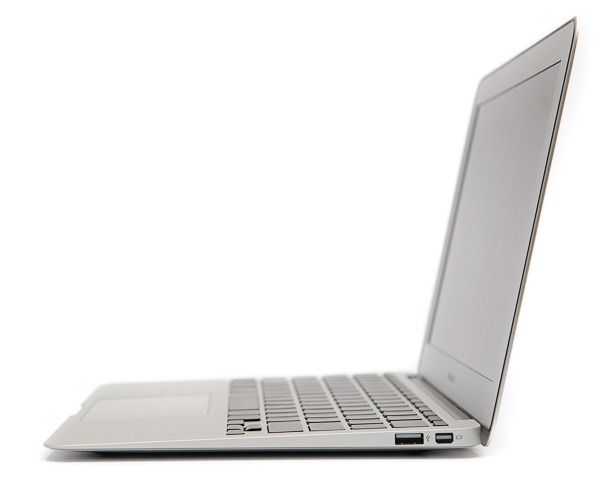
One thing of the new 16:9 aspect ratio sported by the new MacBook Airs is that content is, unsurprisingly, narrow. In contrast to the real estate of a larger screen, the relatively short height of the screen means that the working area in programs like Adobe Lightroom becomes extremely tight, even when hiding some content panes.
Battery Life
Overall, the battery life of the 11″ MacBook Air is good , but not excellent compared to the larger MacBook Pro models. The reason being is simply the limited space available for battery cells in the extremely thin unibody design of the Macbook Airs.
With light tasks like web surfing without heavy video viewing, the 11″ Air does deliver on the 5-hour estimate specified by Apple. With processor-intensive tasks like photo development, the work time can dwindle to 2-hours.
In light of this performance, heavy sessions of mobile processing and transmitting are best served with at least intermittent access to AC power. For one-off events with more limited image processing needs, the MacBook Air's battery life is sufficient.
Aside from general day-to-day use, one other consideration is the very low power consumption of the Air models while not in use – up to 30-days standby juice. Nice touch if you're going to be roaming.
Performance – General Use
For general use – web, email, etc – the Air soars. Even with the wispy 1.4GHz Intel Core 2 Duo, apps open with almost shockingly alacrity and general computer tasks are fast, fast, fast.
This speed is in large part thanks to the SSD at the heart of the MacBook Air. Despite diminutive processing power, the solid state drive lends a snappiness to the machine that belies its true specs when compared to mechanical drives.
All the hype about the instant on, quick app loading, and the pleasure of using a platform this small and light is on point. For blogging and mobile computer use where heavy-duty processor power isn't necessary, the 11″ MacBook Air is a joy to use.
After using this machine on-the-go, it's hard to imagine wanting to grab a larger, heavier laptop as I'm heading out the door. Even the 13″ MacBook Air seems positively gargantuan compared to the petite 11″ model.
Performance – Photoshop
Overall, I found general that the modest MacBook Air was more than up for general Photoshop work in terms of quick editing – cloning, layer masks, layer adjustments, etc. In other words, the basic retouching tasks you'd be performing on-location or while traveling. For anything more serious, the format of a laptop simply isn't viable, regardless of the power.
If anything, the stock interface of using the Air's touchpad was the most limiting factor, due to the slight awkwardness moving sliders with the touch-based interface. Using keyboard shortcuts helps diminish this problem to a degree, but it's still not an ideal situation. This criticism isn't exclusive to the MacBook Airs, but extends to any laptop.
Adding in my preferred interface – a Wacom Intuos 4 tablet – makes processing on the Air much easier, though it takes it out of the realm of an ultra-portable, too.
Performance – Lightroom Editing
For editing in Adobe Lightroom, I found the 11″ Air perfectly serviceable, with some caveats. For tasks of making editing decisions based on composition, exposure, and timing, the MacBook Air does a fantastic job.
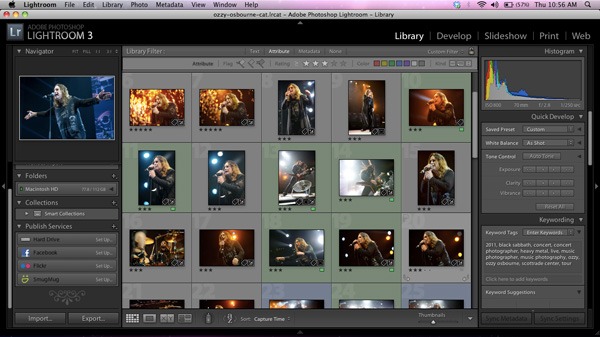
Due to the limited processor and RAM configurations, where I found the 11″ MacBook Air struggling is in rendering 1:1 previews from RAW. Here, the Air really seemed to struggle to render the images at 100%, which can be important when checking focus or determining detail effects like noise reduction or sharpening.
The workaround I found was in rendering 1:1 previews for the batch prior to editing, which made checking focus on a batch import a breeze. However, this system of editing assumes the luxury of time to render 1:1 previews (albeit also with the necessity of checking focus).
Overall, for quick editing of images in quick selects are made based on composition, exposure, and the moment/subject alone, the Air excelled. For exacting edits based on technique and focus, it makes sense to edit as completely as possible before this level of granularity of selection, and then to batch render previews as needed.
Performance – Lightroom RAW Processing
Overall, I had no complaints with the speed of using the Develop module in Adobe Lightroom 3. For the kind of quick edits would would need to process in the field – exposure, WB, curves, etc – changes are pretty much instantaneous and smooth.
Again, just as with Photoshop, the biggest stumbling block of RAW processing is the fact that you're using a labtop – using a trackpad on any laptop, even one multi-touch enabled – is far from ideal. Whether you're on a 11″ MacBook Air or a 17″ MacBook Pro, you're better off with a tablet interface like the Wacom Intuos 4 for the quickest processing.
Performance – Lightroom RAW Exporting
There are plenty of benchmarks on how the MacBook Airs perform against “real computers.” Personally, bar graphs don't mean a whole lot to me, which is why I always try to bring you simple, real world examples in my reviews.
To test the new 11″ Air, I setup a simple experiement – pitting the laptop against my current workhorse, my Apple Mac Pro. Now, my Mac Pro isn't not new – it's a mid-2007 system with a modest 2 x 2.66GHz Dual-Core Xeon processors, which not heavy by 2011 standards, still rips through most daily tasks. Aside from a difference in the processors, we're also talking 9GB RAM in the Mac Pro vs 4GB RAM in the Air.

The Test:
My test for these two machines was simple – I exported 60 RAW (Nikon .NEF) files from my Nikon D3 at full resolution to 80% quality JPGs and timed the task. The results?
MacBook Air: 7:12
Mac Pro: 3:29
In other words, the Mac Pro was a little over twice as fast. To break it down to individual files, here's how the two setups performed:
MacBook Air: 7.2 seconds per file
Mac Pro: 3.5 seconds per file
Granted, we're comparing a pro-level desktop machine (however aged) with a featherweight here, but hopefully this test can give you a reference for how the new 11″ MacBook Air stacks up in terms of processing power.
Summary
So, is the 11″ MacBook Air the perfect laptop for working the photographer working on-location? Of course, this is a trick question. The 11″ MacBook Air, with its limited processing power and even maxing out to 4GB RAM, is far from the perfect engine by any standard when it comes to photographic software.
However, in terms of delivering an ultra-light platform for mobile editing, the 11″ MacBook Air proves a completely viable solution when size and weight are of paramount concern. After all, the Air weighs in at almost exactly half the weight of the 4.5-pound 13″ MacBook Pro. While 4.5-pounds might not sound like much, I'd take the 11″ Air over the MacBook Pro without blinking the next time I have to shoot a 3-day music festival.
I can't help but think that the MacBook Air line is something famed nature photographer Galen Rowell would have appreciated. Rowell was known for his use of light SLR bodies and compact primes that let him “be there when the light is right” on ultra-light expeditions when heavier “pro” gear would have been a burden. After all, the best camera is the one you have with you.
For power, connectivity, and options, the 13″ MacBook Pro offers superior specs in every way with very few of the compromises found in the 11″ and 13″ MacBook Air models. What the Air line uniquely delivers on is the ability to quickly edit in the field with the lightest possible setup. This is the photographer's go-anywhere editing platform.
Ultimately, the MacBook Air is a machine of compromise as a tool for the photographer. However, with its compromises also come a level of freedom that translates into an efficiency impossible with heavier setups. For mobile editing, the best computer is the one you have with you.
Recommended Retailers
The 11″ MacBook Air tested in this review was provided by B&H, where I personally buy all my camera gear. If you find this review helpful, please consider buying your next photo gear purchase from B&H, Amazon.com, or any of my other my affiliate links.
11″ Model:
- 11″ MacBook Air (base model)
- 11″ MacBook Air w/ 4GB RAM, 64GB SSD
- 11″ MacBook Air w/ 4GB RAM, 128GB SSD
- 11″ MacBook Air w/ 4GB RAM, 128GB SSD, 1.6GHz Core 2 Duo
13″ Model:
- 13″ MacBook Air (base model)
- 13″ MacBook Air w/ 4GB RAM, 128GB SSD
- 13″ MacBook Air w/ 2GB RAM, 256GB SSD
- 13″ MacBook Air w/ 4GB RAM, 256GB SSD
- 13″ MacBook Air w/ 2.13GHz, 4GB RAM, 256GB SSD
Simply clicking through either B&H or Amazon.com here for your purchases helps me bring you free content like these 6-tips for the new concert photographer, and naturally it doesn't cost you a cent more. If you do grab some gear, drop me a line! I’d love to hear about what you picked up.

